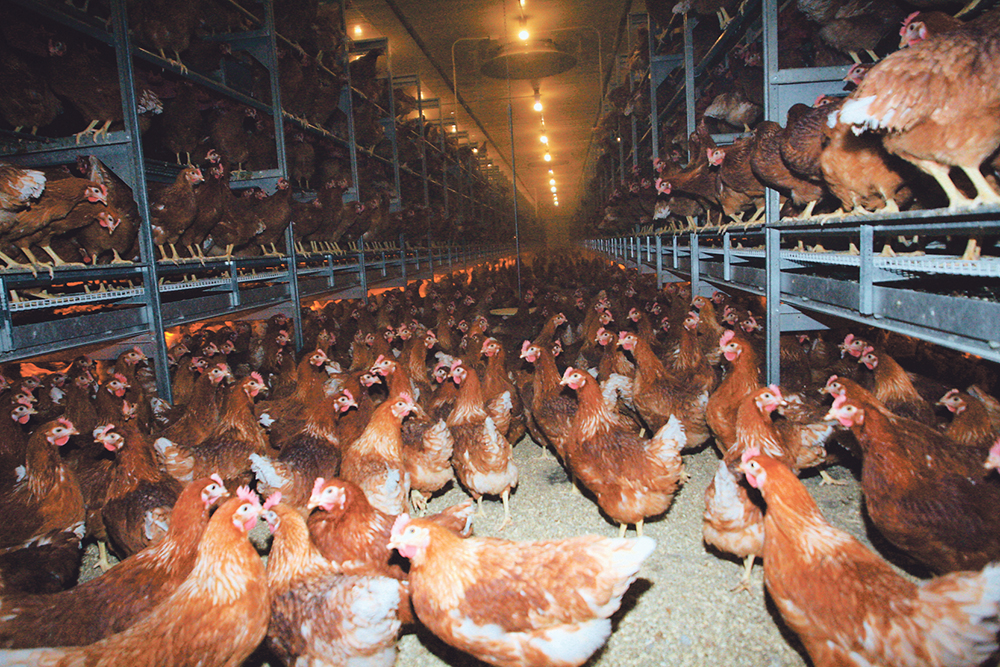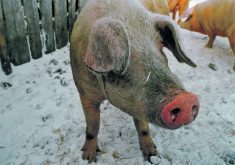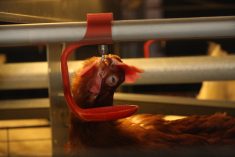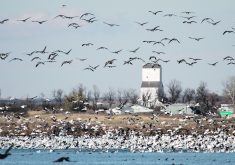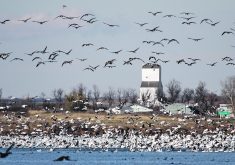The numbers of birds infected with avian influenza and the provinces and farms affected by it continues to grow as Canada faces the largest geographic spread of the disease since it was first detected in the country in 2004.
British Columbia, Saskatchewan and Quebec are the latest provinces to report cases of the bird flu as of April 18, with the Canadian Food Inspection Agency reporting half-a-million birds affected.
This year’s outbreak of the highly contagious strain is largely being blamed on migrating wild fowl populations.
Read Also

Canadian Food Inspection Agency extends chronic wasting disease control program consultation deadline
Date extended for consultation period of changes to CWD program
The first cases were reported in Atlantic Canada between December and mid-March before becoming virulent in southern Ontario and Alberta during the first two weeks of April.
B.C. reported its first cases at a farm in the interior of the province on April 14. It ordered flocks of more than 100 birds to be moved indoors until the end of the migration period next month.
Saskatchewan also identified its first case in domestic birds on the same day, in the Rural Municipality of Moose Mountain, in a small flock followed by a second instance in the RM of Loreburn on April 16.
Four flocks in Quebec are also now infected along with a dozen farms in Alberta and 16 in southern Ontario.
Despite the rapid spread resulting in hundreds of thousands of birds either dying or being culled, Lisa Bishop-Spencer, director of communications for Chicken Farmers of Canada, said the industry’s supply management system will be able to handle shortfalls in the market.
“We don’t export a lot of product,” she said. “What that means is that we can control the production that is raised throughout the country.”
Bishop-Spencer said the initial 2004 outbreak saw four percent of the domestic production affected, accounting for more than a million birds.
Adjustments in production nationally through the supply managed systems were able to stem any shortfall. The reverse situation occurred following a glut on the chicken market when restaurants representing 40 percent of the demand were forced to close due to pandemic restrictions.
“That flexibility, that agility is one of the big benefits of supply management,” said Bishop-Spencer.
With chicken production spread out coast-to-coast, Bishop-Spencer said there is a large area that isn’t dealing with bird flu and they can draw on resources from those areas.
As far as chickens infected with avian influenza getting into the food chain, Bishop-Spence said that’s unlikely due to the incubation period of the virus, which causes death a short time after infection.
Graham Snell, executive director of Chicken Farmers of Saskatchewan, said during an interview just before Saskatchewan reported its first case in a domestic flock that producers were preparing for the inevitable.
“We’ve had a lot of meetings about it, we’ve been talking about it, we’ve been reminding our producers,” said Snell. “The bio-security already on farms is pretty stringent, pretty extreme and animal care and farm safety is always at the top of the list.”
Snell said chicken producers must maintain their strict bio-security protocols, which means tracking visitors to the farm, monitoring the bird coops frequently, ensuring vehicles are sanitized including tires and wheel wells and sanitizing footwear.
One vulnerability of small flocks and commercial production is interactions with wild birds that could be carrying bird flu, a vulnerability Saskatchewan’s large producers should be able to mitigate.
“There are no outdoor chicken barns. Our extreme Saskatchewan weather means everything is kept indoors,” said Snell.
He added if Saskatchewan chicken producers are asked to increase production to make up shortfalls in other portions of the province, they are ready to do so.
As of April 18, Manitoba has reported no cases but it’s investigating possible cases in wild bird populations in the southwest near Waskada and a case in near Dauphin.
Wayne Hiltz, executive director of Manitoba Chicken Producers, said in addition to bird flu being found in neighbouring provinces, it’s also been found in American states that share a border with Manitoba.
He’s urging producers to be on high alert.
As of April 18, 24 primary control zones had been established to control all poultry products going out of or into areas around infected farms. Eleven of them are in Ontario, nine in Alberta, three in Quebec and one in B.C.


